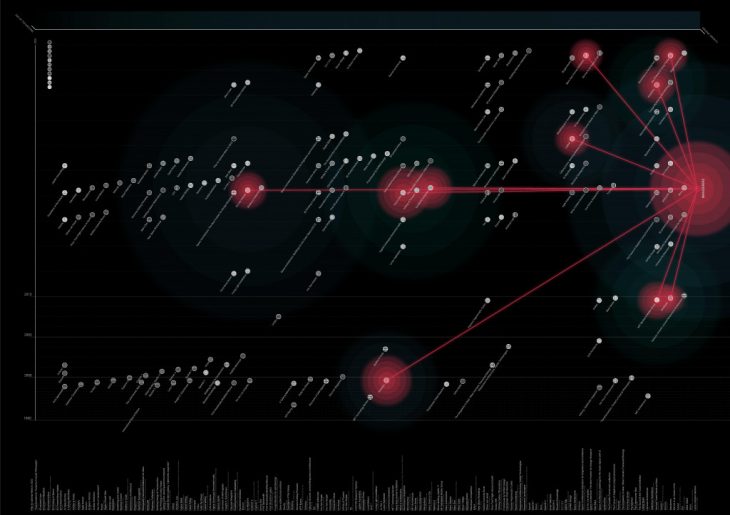WANDERERS // Age of Machine to Organic Growth
‘An Astrobiological Exploration’
By Neri Oxman & MIT Media Lab in partnership with Christoph Bader & Dominik Kolb – Deskriptiv.
“Since the Industrial Revolution, design has been dominated by the rigors of manufacturing and mass-production,” she says. “Assembly lines have dictated a world where designers have been taught to think of their product in terms of ASSEMBLIES OF PARTS, each made from a DIFFERENT MATERIAL and fulfilling a predetermined function. We’re now moving from a WORLD OF PARTS, of separate systems, to architecture that combines and INTEGRATES BETWEEN STRUCTURE AND SKIN.”
– Neri Oxman
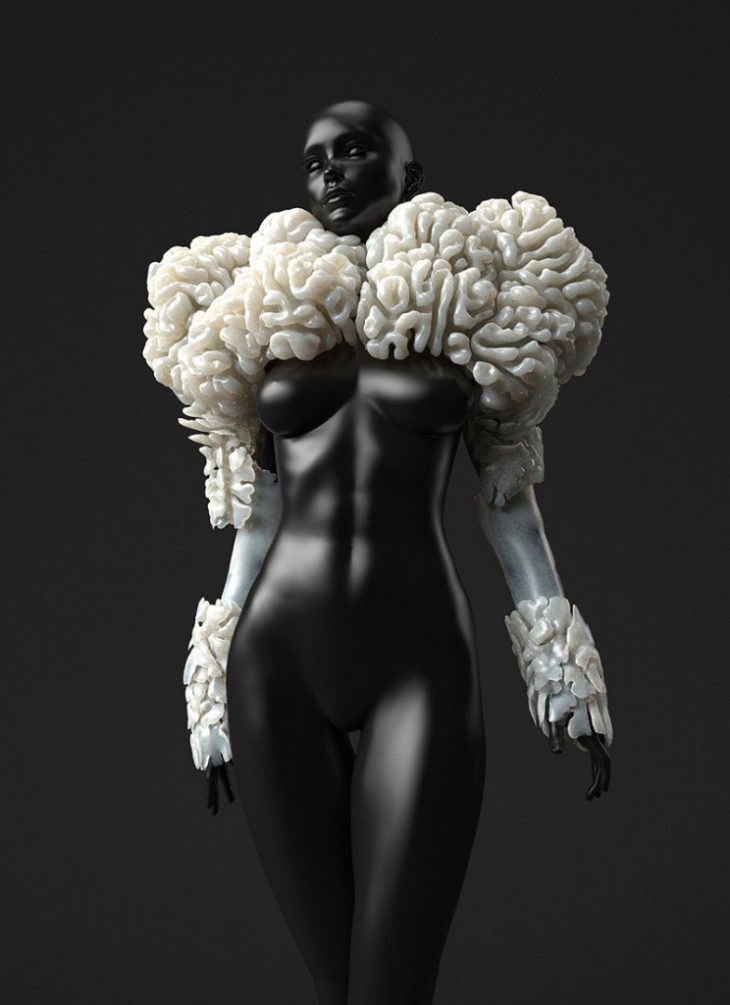
// PROJECT INFORMATION
Wanderers explores the possibility of voyaging to destinations beyond planet Earth.
The Wanderers series was unveiled as part of Stratasys’ collection ‘The Sixth Element: Exploring the Natural Beauty of 3D Printing’ on display at EuroMold, 25-28 November 2014 – Frankfurt, Germany, organized by Naomi Kaempfer. The 3d printed garments are infused with synthetically engineered microorganisms which multiply to create the wearable within a 3D printed skins, making the hostile habitable and the deadly alive.
Each wearable is designed for a specific extreme environment where it transforms elements that are found in the atmosphere to one of the classical elements supporting life: oxygen for breathing, photons for seeing, biomass for eating, biofuels for moving, and calcium for building.
// COLLECTION
Wanderers collection are named after their respective destination planets: Mushtari (Jupiter), Zuhal (Saturn), Otaared (Mercury) and Qumar (Moon).
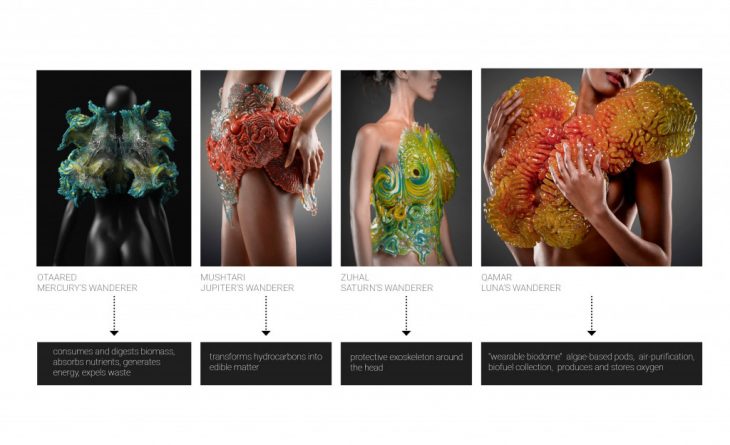
// PROJECT ANALYSIS
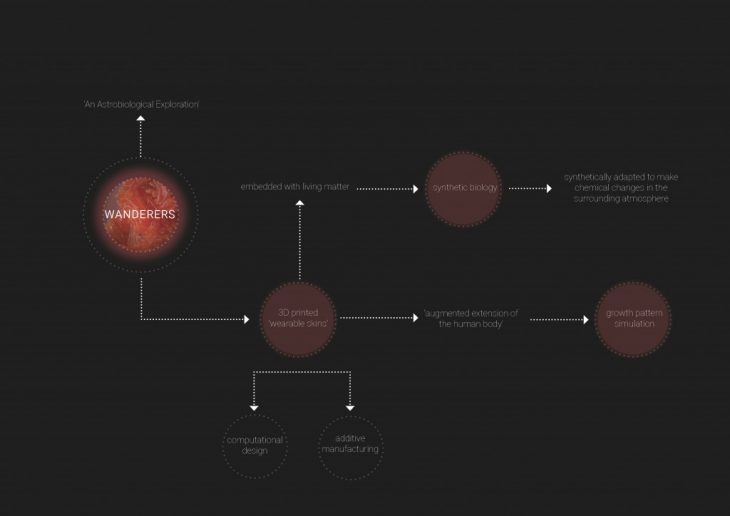
// MAIN PARAMETER SCALE: FROM MACHINE AGE TO ORGANIC GROWTH
In order to represent the projects on a linear scale, we looked at expansive systems from AUTOMATA to AUTONOMOUS or the gradient from machine age to organic growth. This way, we were able to represent each project according to this scale in order to visually see which projects were closely related to the Wanderers Project.
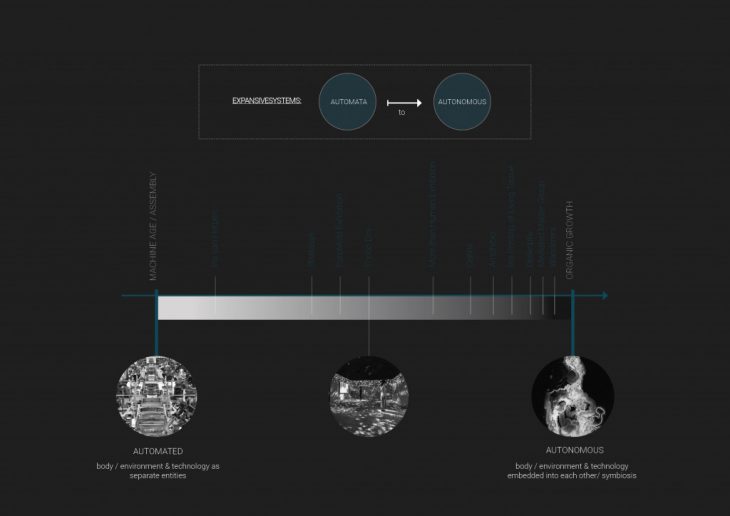
// WANDERERS DEFINED
In order to further understand what was influencing the Wanderers Project, we looked at five more categories that could connect different projects over different categories. These included Materials Engineering, Space, Additive Manufacturing, Computational Design, & Synthetic Biology.
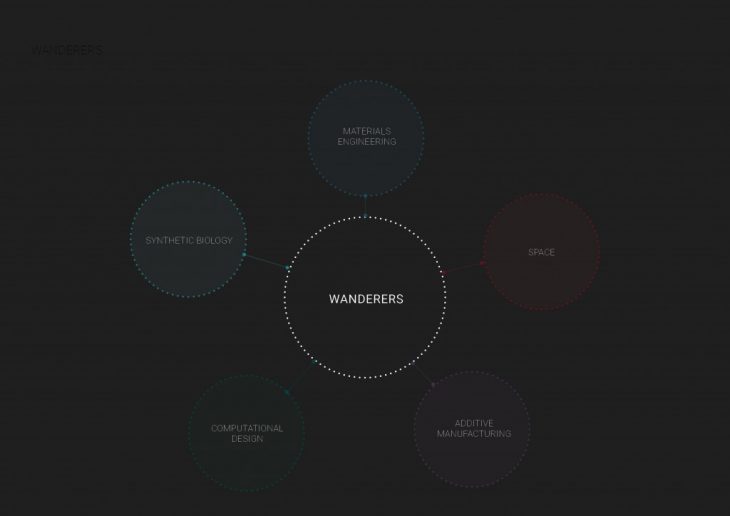
// PROJECTS
In order to understand what was happening before and during the time of the Wanderers Project, we explored eleven different categories. These were namely Sciences, Technology, Architecture, Architectural Communication, Fashion, Exhibition, Interaction, Socio/Political-Cultural-Economical-Demographical Events, Philosophy, Cinema, & Architectural Schools-Offices-Labs-Studios. We explored projects in each category that had some link and influence to the Wanderers Project. Every one of these projects was mapped on to the Time Field according to year.
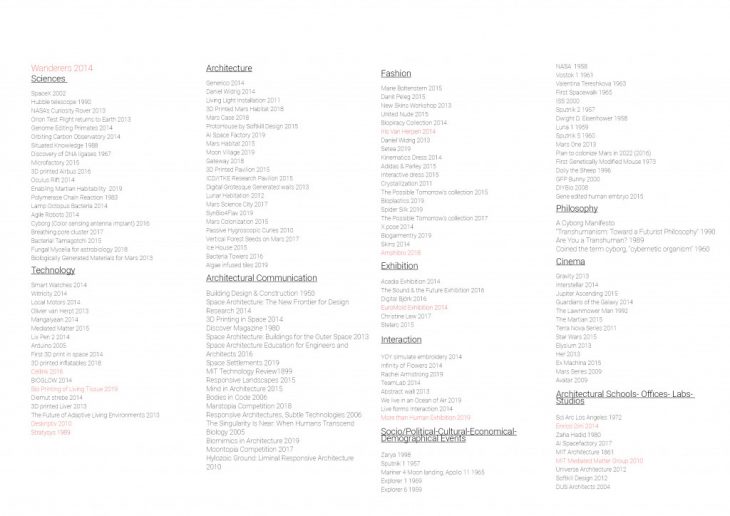
// WANDERERS DEFINED: REPRESENTATIVE PROJECTS
We selected ten projects that we saw as ‘representative projects’. This means that these ten projects that were spread over the eleven different categories were the most linked or influential to the Wanderers Project.
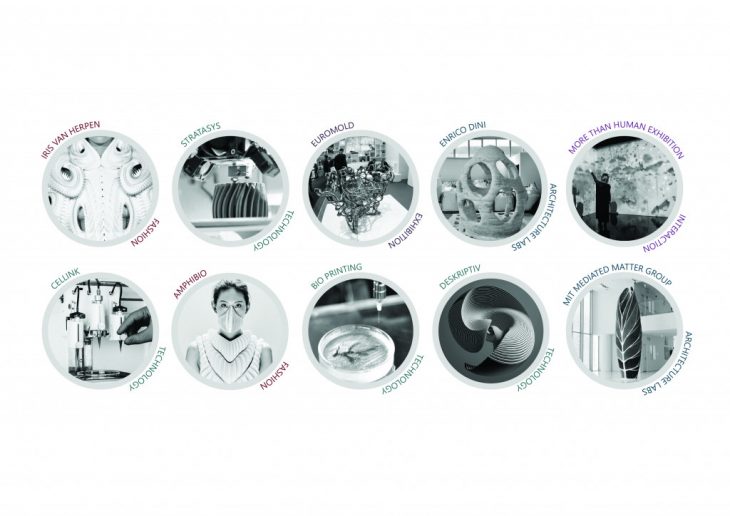
// BASE
Firstly, all the projects were mapped out linearly based on the main parameter scale (from machine age to organic growth) to the year it was created. Each circle represents a project, and each category is represented by the different hatch of the circle.
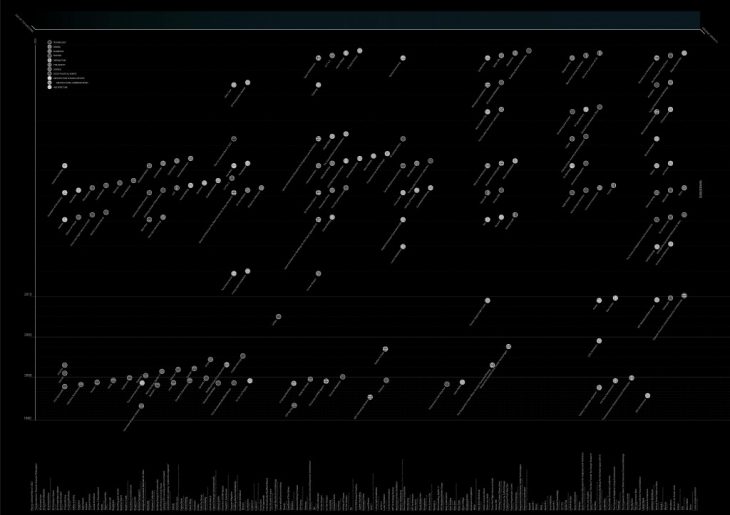
// COMPUTATIONAL DESIGN
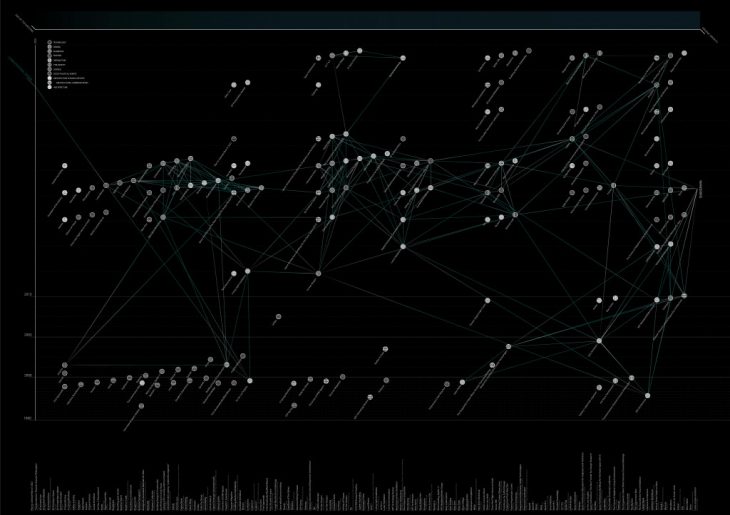
// SYNTHETIC BIOLOGY
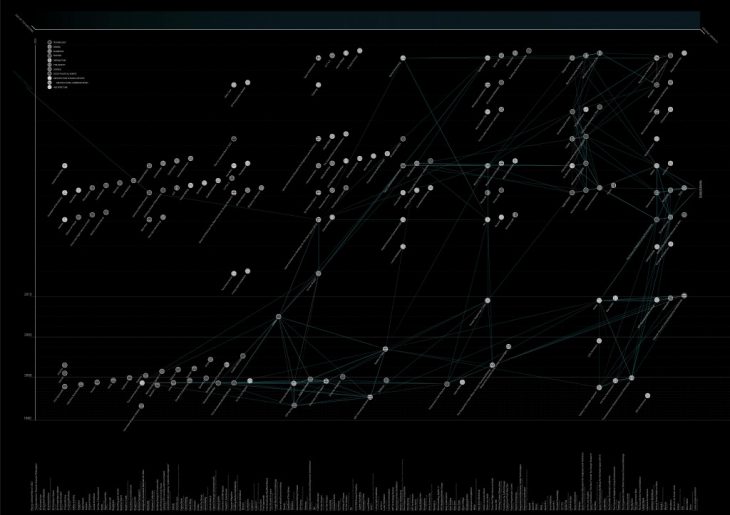
// MATERIAL ENGINEERING
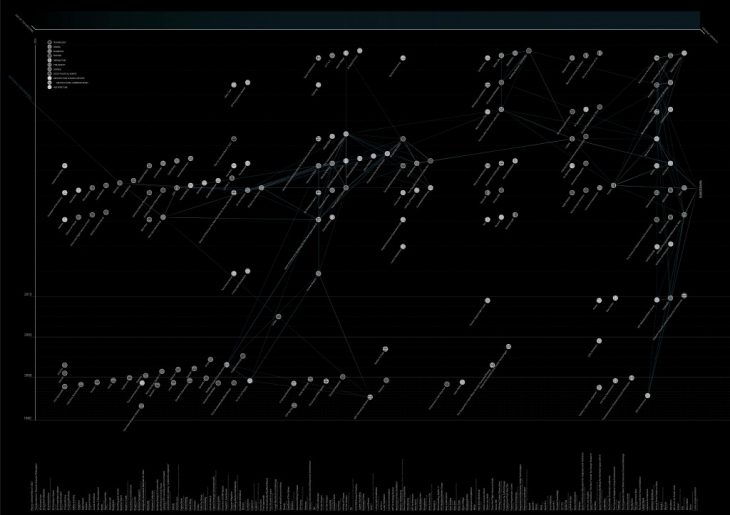
// ADDITIVE MANUFACTURING
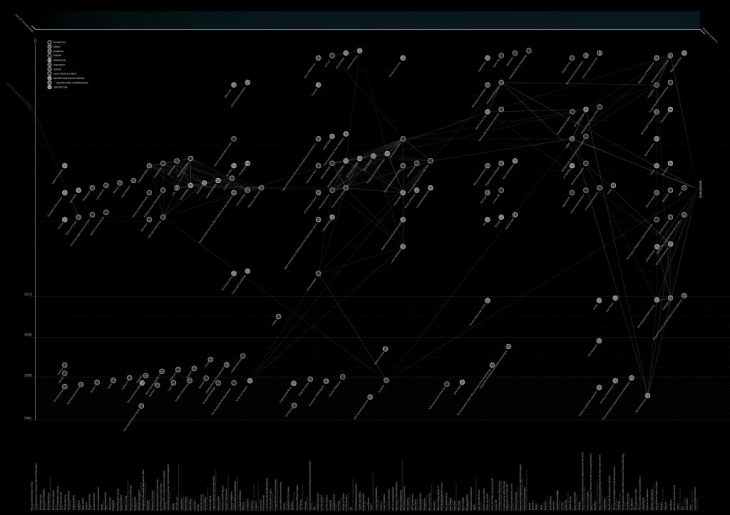
// SPACE
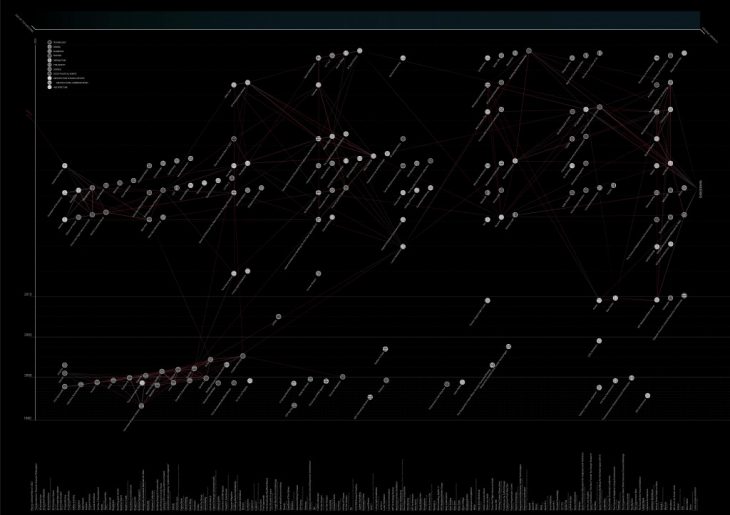
// REPRESENTATIVE PROJECTS
// FINAL TIME FIELD
This final image is a combination of the previous images. It represents the Wanderers Project and the ten representative projects as well as how they are connected to all the other projects on the gradient scale as well as through the five categories: Materials Engineering, Space, Additive Manufacturing, Computational Design, & Synthetic Biology.
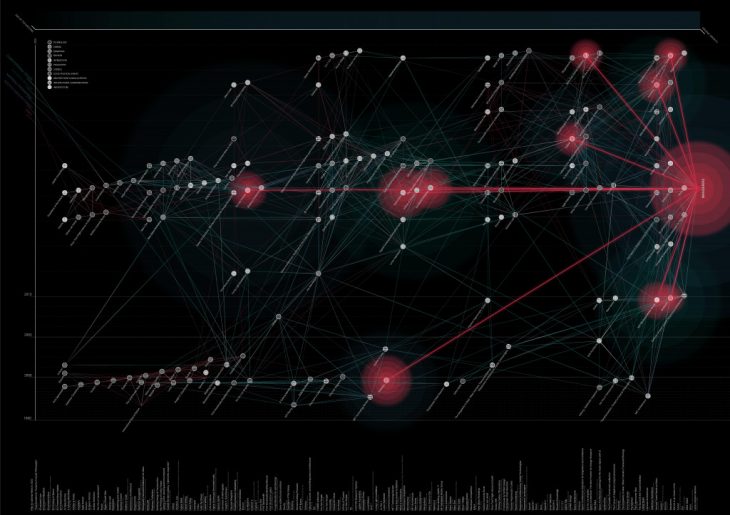
Time Fields / Wanderers is a project of IAAC, Institute for Advanced Architecture of Catalonia developed at the Master in Advanced Architecture in 2019 by:
Students: Brenda Freitas, Ilaena Napier, Léa Garguet-Duport, Zackary Bryson, Hanna Lepperod, & Stefana Zapuc.
Faculty: Manuel Gausa, Jordi Vivaldi Piera, & Mohamad Elatab
